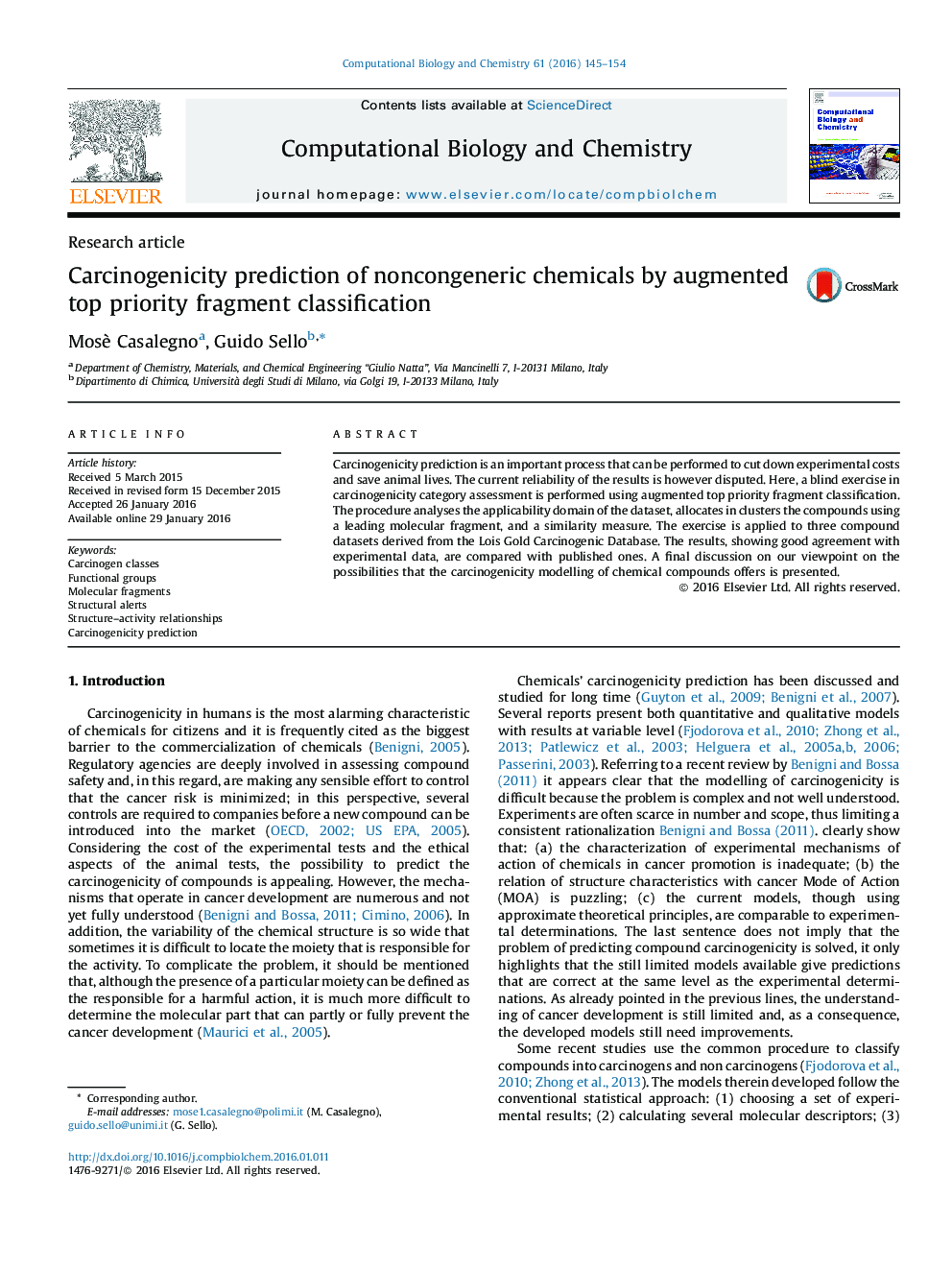| Article ID | Journal | Published Year | Pages | File Type |
|---|---|---|---|---|
| 14939 | Computational Biology and Chemistry | 2016 | 10 Pages |
•The prediction of chemical carcinogenicity using theoretical models is examined.•A non-congeneric dataset is analysed.•A blind approach to modelling carcinogenicity is used warranting an unbiased result.•A comparison with available models is performed.•A discussion concerning the prediction reliability is presented.
Carcinogenicity prediction is an important process that can be performed to cut down experimental costs and save animal lives. The current reliability of the results is however disputed. Here, a blind exercise in carcinogenicity category assessment is performed using augmented top priority fragment classification. The procedure analyses the applicability domain of the dataset, allocates in clusters the compounds using a leading molecular fragment, and a similarity measure. The exercise is applied to three compound datasets derived from the Lois Gold Carcinogenic Database. The results, showing good agreement with experimental data, are compared with published ones. A final discussion on our viewpoint on the possibilities that the carcinogenicity modelling of chemical compounds offers is presented.
Graphical abstractFigure optionsDownload full-size imageDownload as PowerPoint slide
